A Sourdough Experiment
I have been using this recipe for years and it is time for the sourdough experiment. It is good for lovely dinner rolls, stuffed buns with pumpkin, other tasty vegetables, meat, and even steamed like Bao. The link was still in my saved file. https://www.tasteofhome.com/recipes/cornmeal-parker-house-rolls/ It is time to see if they can fit into my current sourdough process. So then, Parkerhouse Rolls with Cornmeal, A Sourdough Experiment.
Convert to bakers math, smaller batch and sourdough leaven.
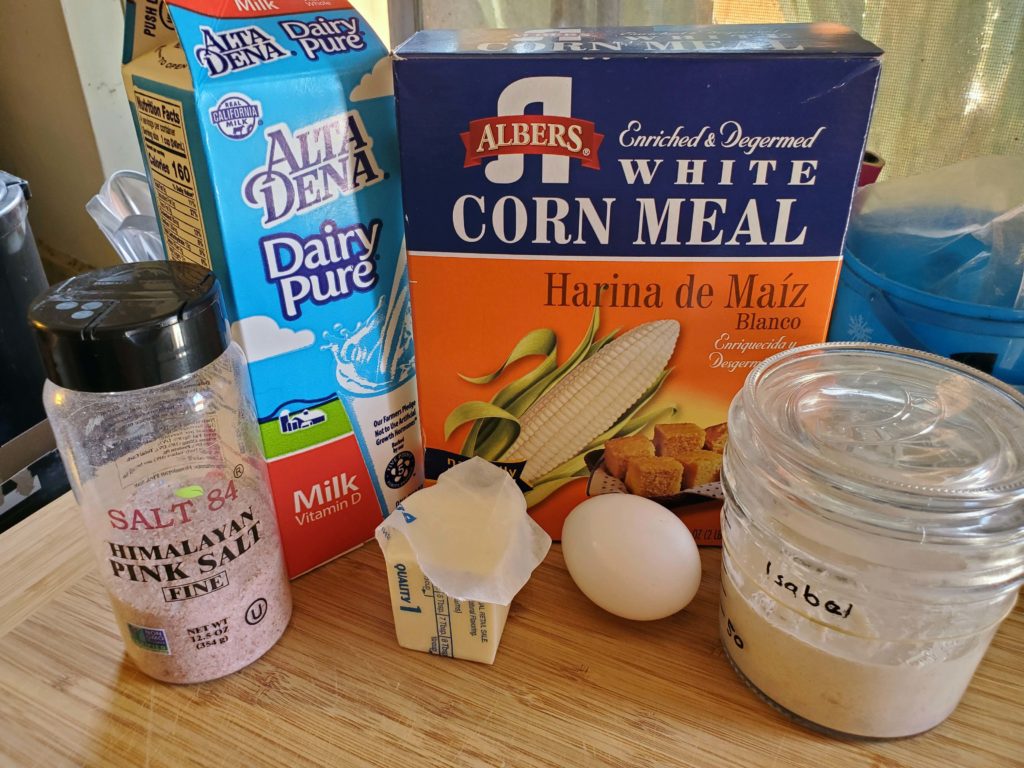
- 4-1/2 cups (540 gr) to 5-1/2 cups (660 gr) cups all-purpose flour I often use all the flour
- 1/2 cup sweet butter, cubed (1 stick)
- 1/2 cup sugar 100 grams
- 1/3 cup cornmeal , Albers 44g
- 1 teaspoon salt 6 grams
- 2 cups wholemilk 280g
- 1 package (1/4 oz) active dry yeast
- 1/2 c warm water 118g
- 2 large eggs, room temp
- 3 tbsp butter, melted 43 g
- One additional egg for wash
- 270-330 grams , I used 300g
- ½ stick 57 grams
- 50 grams sugar
- 22 grams cornmeal
- 3 grams salt
- 1 cup/140 grams -starter H20 (100 grams)
- 120 grams Levain 40% inoculation
- 59 grams (0 grams with starter H20)
- 1 egg
- 22 grams butter for after bake
- Make sure to wash
- Hydration is changed from the original 45% to 53% because … Sourdough.
In looking at a recipe from https://www.theperfectloaf.com/soft-sourdough-potato-buns/ , I found that he used a 41% levain for enriched rolls assuming a same day bake. Credit where due, Maurizio knows sourdough.
In a small saucepan, melt butter. Stir in the sugar, cornmeal and salt. Gradually add milk. Bring to a boil over medium-high heat, stirring constantly. Reduce heat; cook and stir for 5-10 minutes or until thickened. Cool to 110°-115°. With less milk than the original recipe, it thickens fast. It should be a medium porridge consistency. Take it off when so. Let cool to room temperature.
When cool, add egg and levain to cornmeal mixture in a large bowl and add flour to make a soft dough. Knead dough for a few minutes only adding a bit of flour if needed. It will still be very sticky and craggy at this stage. Cover and let dough relax for 30 minutes before doing 4 sets of stretch and folds at 45 minute intervals. Put into bulking container and let rise until about 2x, several hrs.
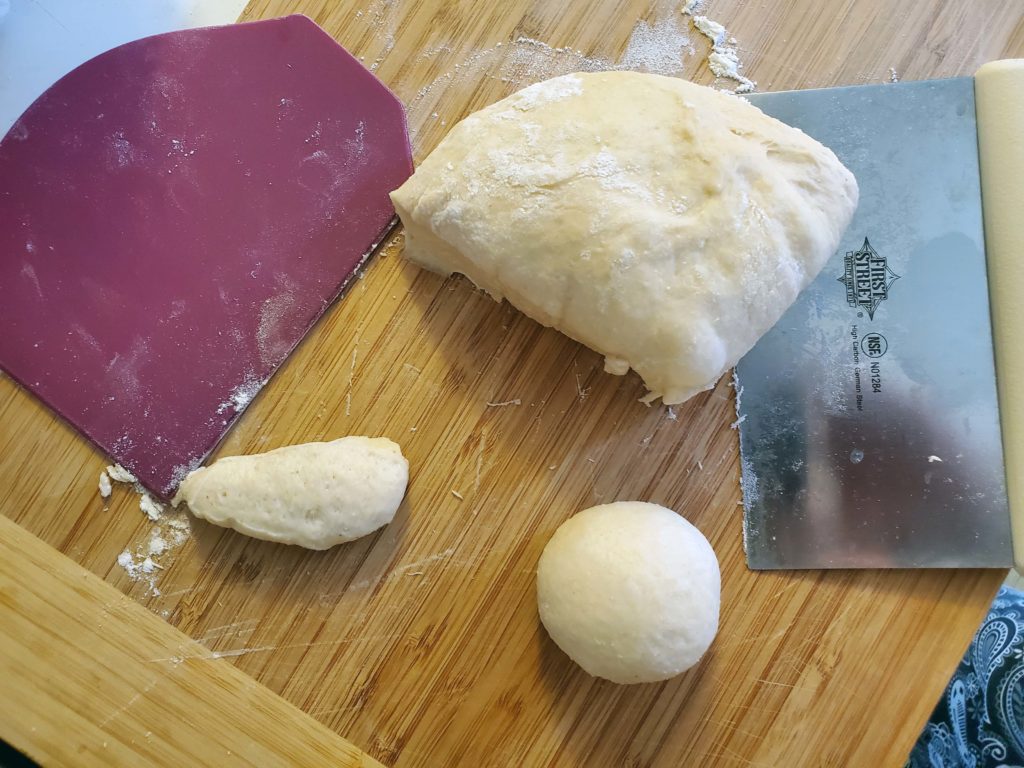
Turn dough out onto a floured board. Cut into weighed pieces appx 60 grams. Form each piece into a ball and put into a buttered pan. Cover and set aside for final proof. Depending on temperature it should take an hour or two.
Bake at 375° for 15-20 minutes or until golden brown. Brush with melted butter.
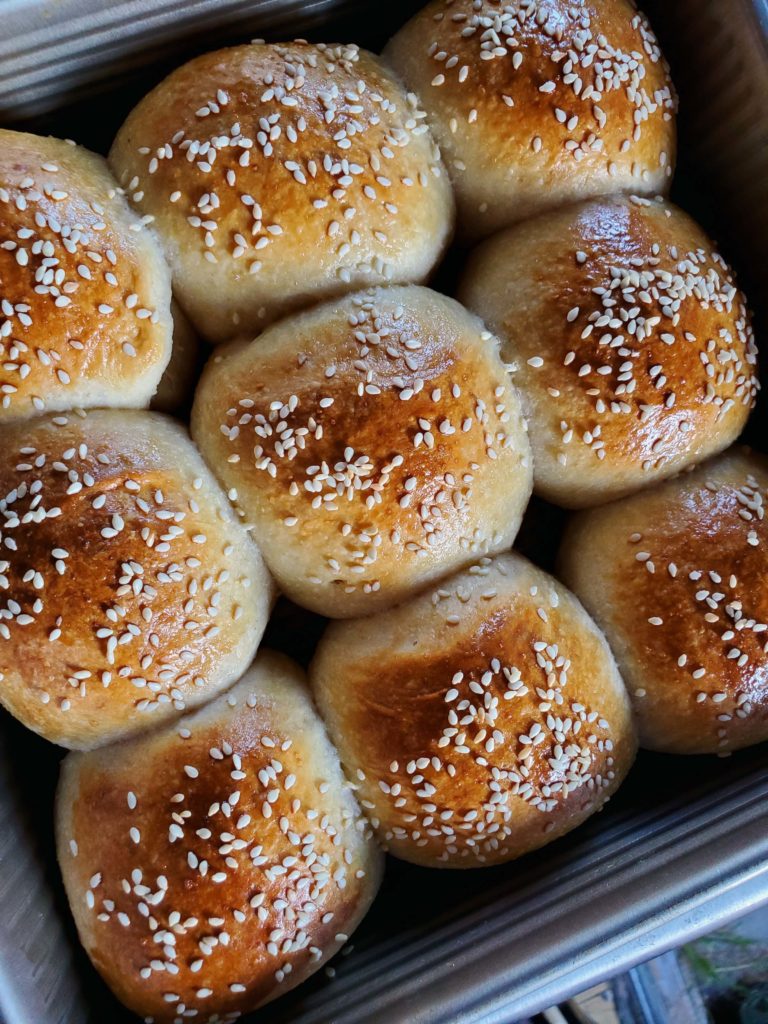
The brief here is to take an existing recipe that I like and convert it to use sourdough starter. I did look online and as always, the information is conflicting. This why I try to gather data and do the experiment.
The purposed of this test is two fold. First, can I take a proven commercial yeast recipe and convert to sourdough. The second is to see if I can avoid the kneading and apply stretch and fold to this kind of bread. Using this much levain guarantees that the dough will be very sticky and will need to be handled carefully.
The first step was to convert the recipe from cups and spoons to grams. I always use baker’s math at this point because it allows easy scaling up or down. For instance, for the experiment it makes sense to make a smaller batch. I could only reduce to a half batch since this is an enriched dough and splitting eggs is something I choose not to deal with.
One of the things to remember when converting to SD is that the water in the starter has to be accounted for. In the original recipe, there is milk as well that is cooked with the corn meal. This adds richness as well as a softer texture. The finished rolls have a bit of graininess which is nice. Anyhoo, all of the water from the recipe was removed and the milk is reduced. This is one of the reasons for the experiment, to see how that affects the final product. I might need to use a thicker starter than typical for me. Time will tell.
The sourdough inoculation is twice as high as my typical bread but that is because the enriched dough retards the rise, especially with sourdough starter. Using more starter helps it rise faster and perhaps taller. On the other hand, the level of moisture may be off. Luckily I have made the recipe enough to know what it is supposed to feel like. I set up the levain before I went to bed last night so I could start early and finish same day, hopefully by dinnertime.
This is a very difficult dough to do a traditional stretch and fold with. I had to use 2 hands. The dough was very resistant and after 3 s&f did not pass the windowpane test mostly due to the grains of cornmeal that broke the thin membrane. Past experience tells me that this is never going to be a totally smooth dough, but it is getting better.
After the 4th stretch and fold, into the bulking container and covered to rise. I will check after 2 hours and see what she has done. Still a grainy dough, but the taste and texture of the rolls should be nice. Perhaps I will cook some sweet potatoes for filled buns.
As it appears, the only sweet potatoes that I have were hiding and are ready for the garden. On the other hand, I have never cooked such moisture depleted tubers. Once again an experiment is afoot. The are not in any stage of rot, only dried more than a bit and the internal structure of one has changed. Very hard to cut. In fact they are so light that they float.
Learning today. If your sweet potatoes are growing shrubs and they are light in weight, plant them either in the yard or the trash. No filling today.
An interesting aside, the mixing bowl usually has to have a good soak to get off the crusted bits, the butter in this dough allowed for a quick easy wash. It was something I had not even considered.
After a 3 hour rise in the 84° heat of my kitchen, the dough was double and more. The poke test told me to wait no longer. The dough was much easier to handle with just a bit of bench flour. I probably could have done with less since the dough balls did not want to stick to themselves easily. I portioned 57 gram portions and rolled them into nice little balls using the fold over, pinch and hand cage method.
I managed 9 in the 8×8 USA pan after a bit of a butter rub. They will now sit for an hour at a time and I will see how they progress. My math was off so there was about 3 more rolls worth of dough so I made a silly roll out of 3 strands crossed and folded over. Why not? Dough needs baking. It will just proof an extra half hour.
After 90 minutes the rolls had filled the pan and it was time to bake. I applied an egg wash and sesame seeds and into the oven they went. Convection setting to give that boost and turned down to 350° after 10 minutes. I soft scrambled the egg and considered giving it to the dog, but it was 5:30p.m. and I needed a snack.
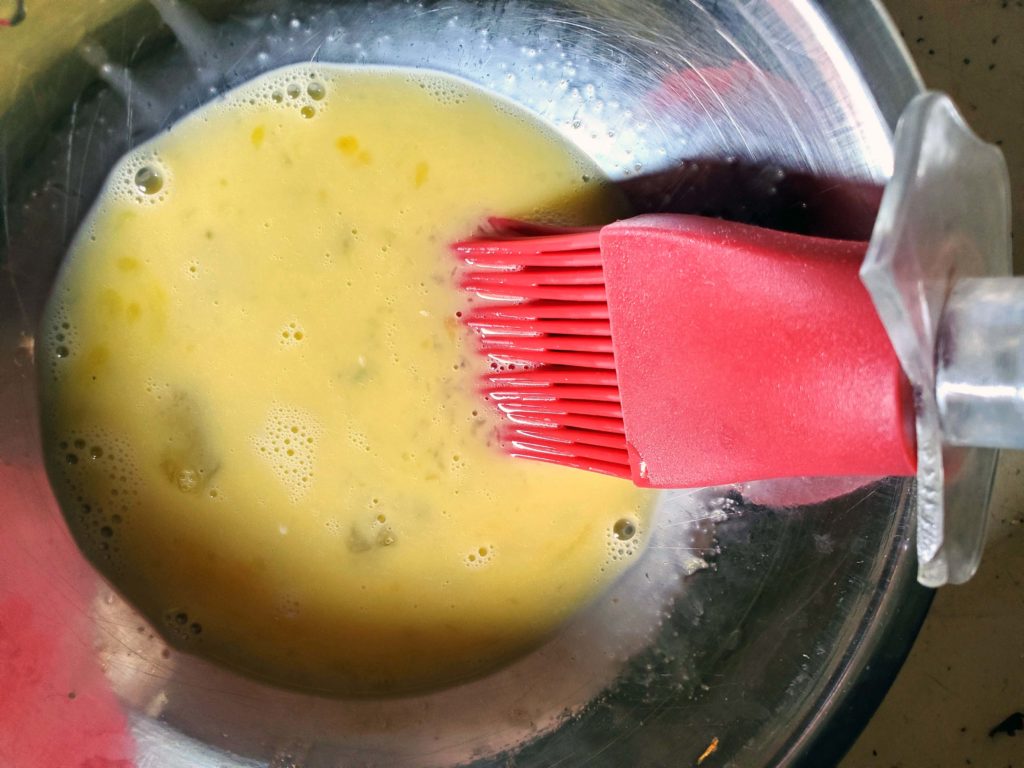
They were ready after 16 minutes. It is always a good idea to keep an eye on your bread.
I could only wait 20 minutes but they were still warm. A nice soft crumb. They could have used just a bit more sugar. The sourdough seemed to have made them less sweet than previous bakes. Very nice dinner rolls. I started before 8a.m. And it is now just after 6p.m. But it was a one day bake.
Unexpectedly, the one large twist had better flavor and I’m not sure why but the note has been written. Another interesting thing is that the cornmeal texture I expected from this recipe is almost all gone with the long ferment. Seven hours total ferment can do that.
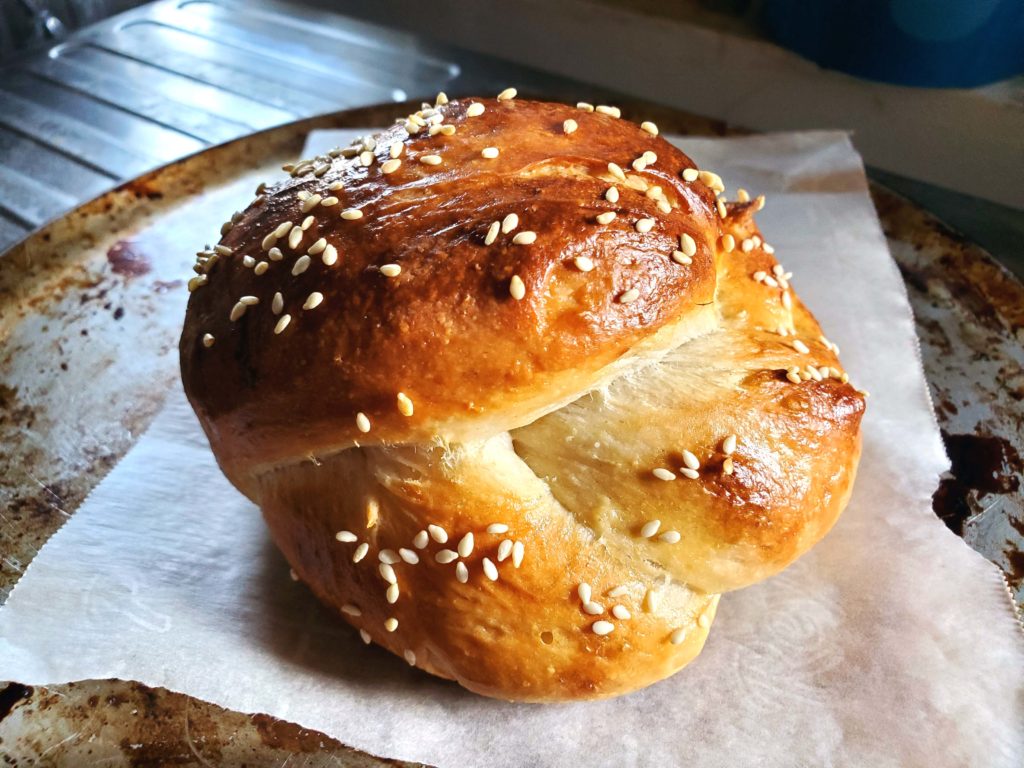
All said and done, this is a bake I make for others who like soft pillowey bread. It is a very good example of that style. For myself however, it does not compare with the firmer, chewier, more rugged sourdough loaves like focaccia or a nice batard. I like a good chew. The extra flavor of whole wheat flour is also something missing here for me.
The conversion to using sourdough here does bear fruit. If I want to use an enriched dough this is a good template for that. Sourdough baking is still pretty new to me and the experiments are necessary to gain knowledge.
All else equal, next time I make these soft dinner rolls, it is likely that I will go the quick route and use commercial yeast if it is available. My feeling is that only I will be able to appreciate the difference. In the time saved, I can do another sourdough experiment.
Just realized that it is an hour past Isabel’s feeding time. I need to see to that.
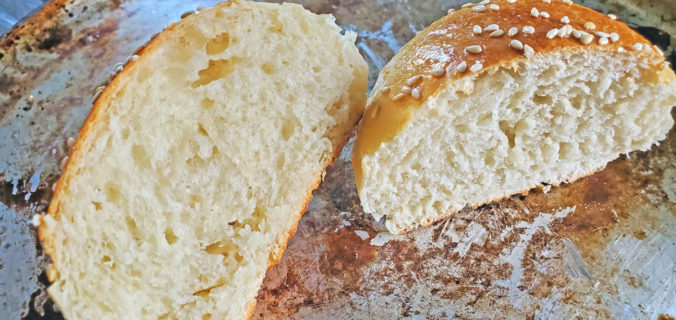
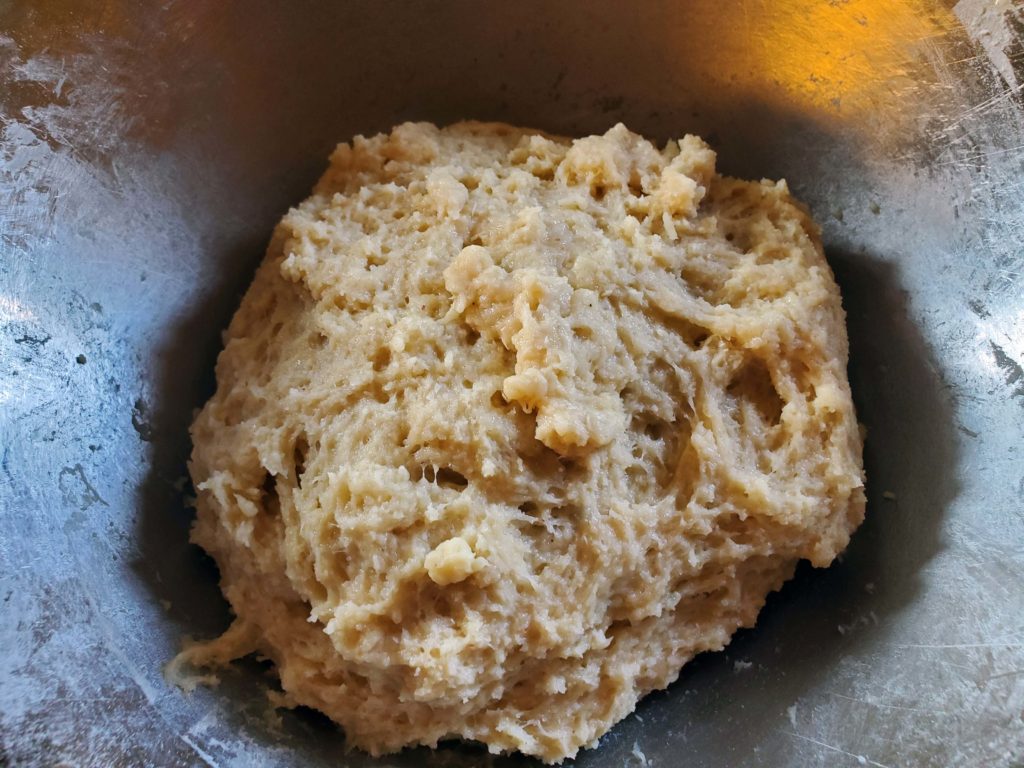
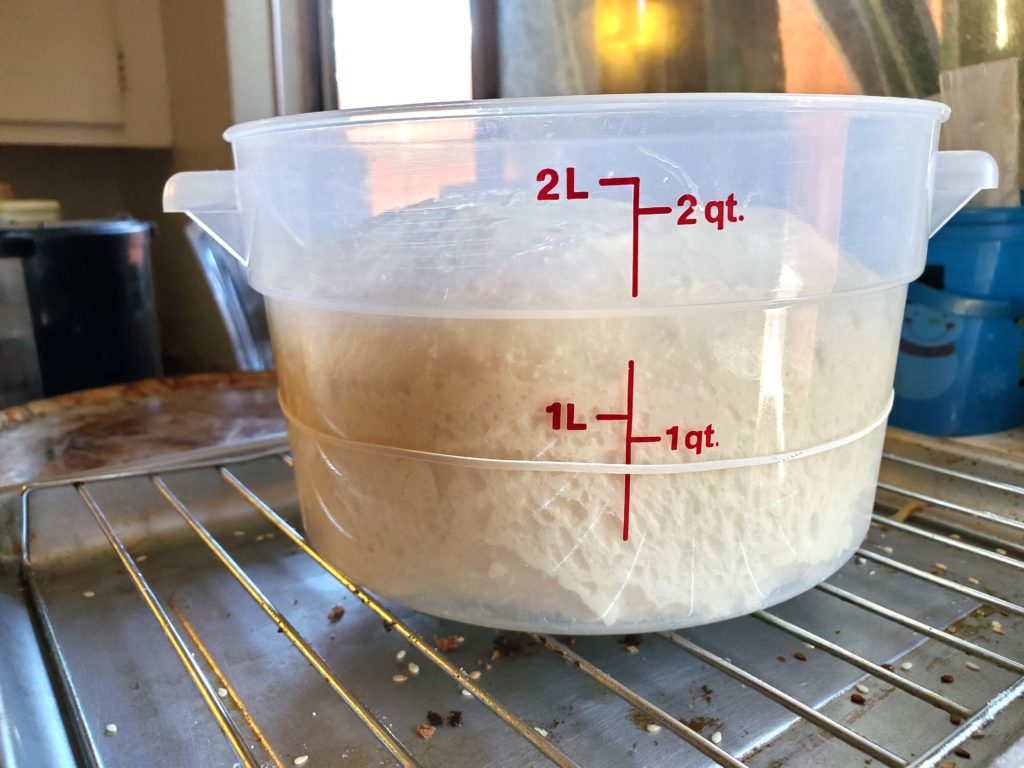
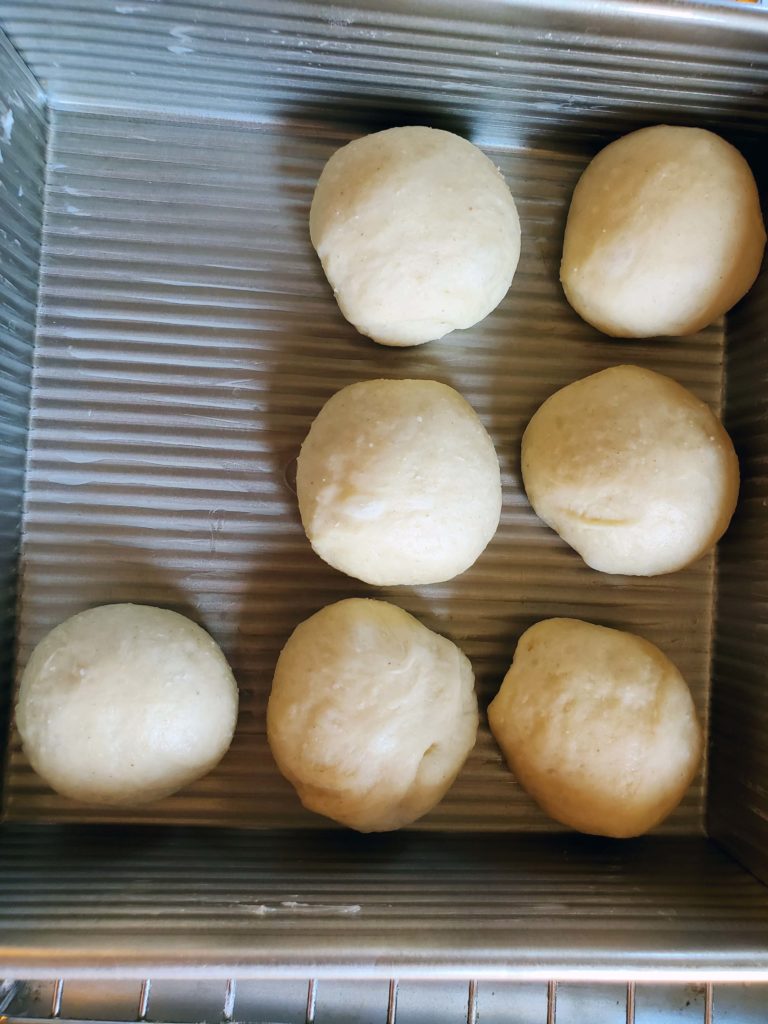
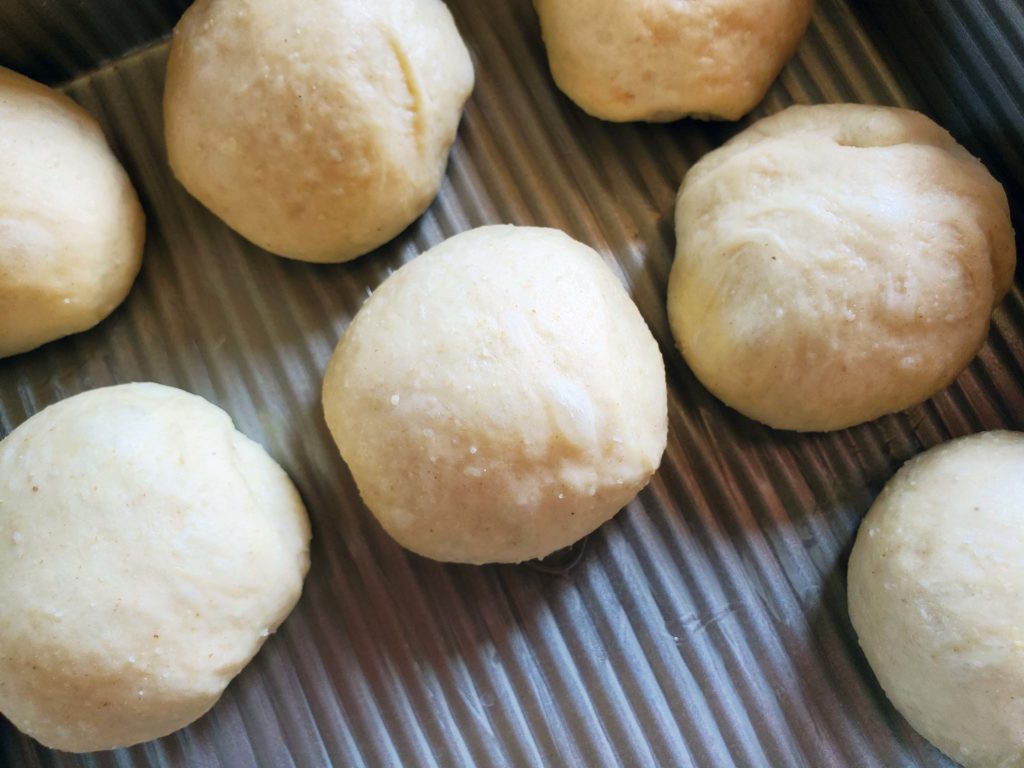

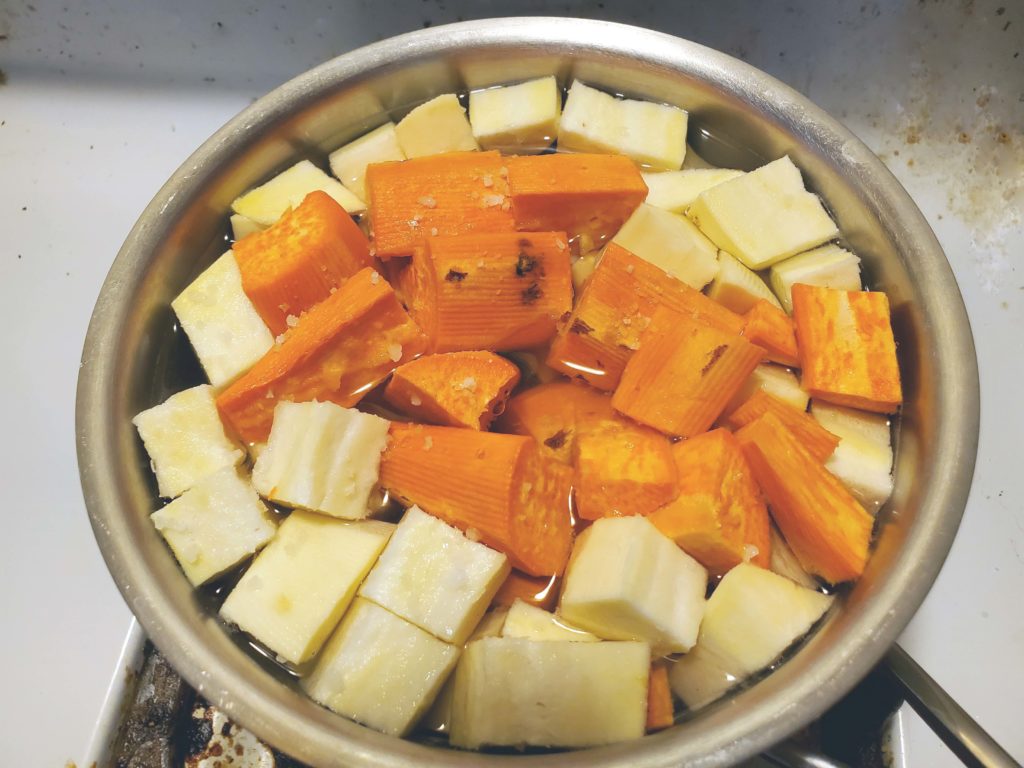
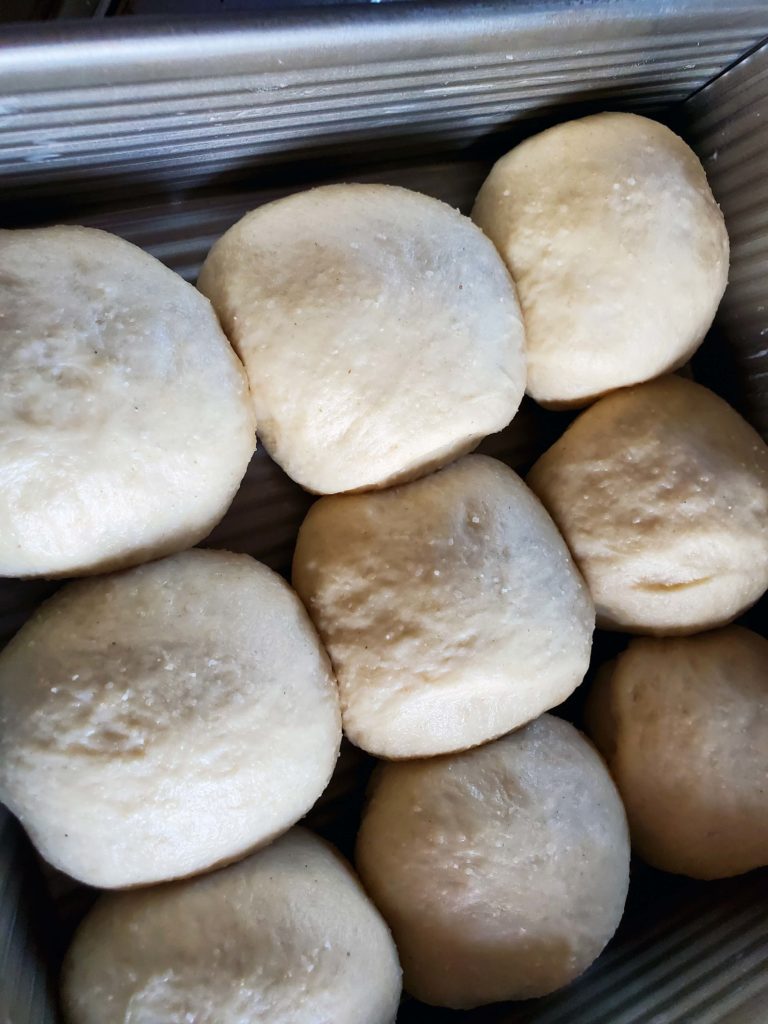
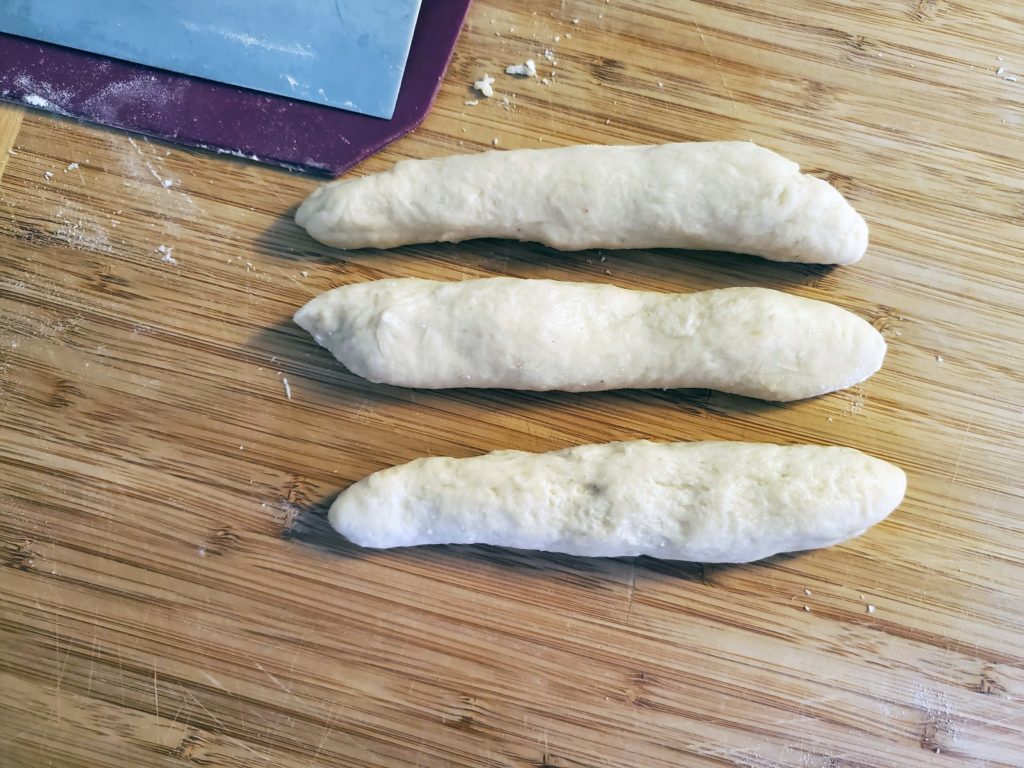
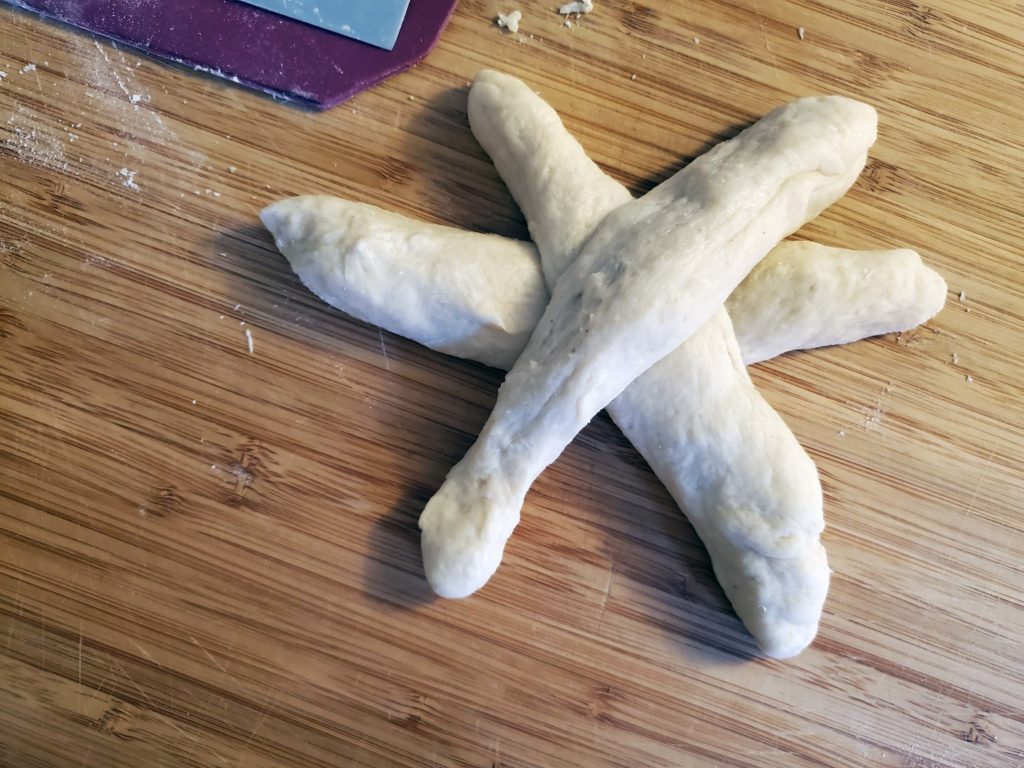
Very interesting! Your writing is so descriptive!
Thank you.